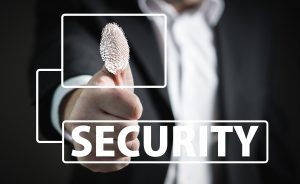 Our passwords protect everything we do online, on our computers, and in our lives. Whether it be a bank account, your e-mail, or your phone, a password is needed to protect your underlying data there within, however, passwords present their own vulnerabilities, and new technology is quickly giving us new ways to protect our data and devices.
Our passwords protect everything we do online, on our computers, and in our lives. Whether it be a bank account, your e-mail, or your phone, a password is needed to protect your underlying data there within, however, passwords present their own vulnerabilities, and new technology is quickly giving us new ways to protect our data and devices.
The standard rules for what was considered a strong password formula was that the password needed to be at least 8 characters long, including at least one upper case letter, one number, and one special character. The rules have been modified, however, to acquiesce to the never-ending criminal minds of the cyber world. Hence, security research companies are now recommending the use of word phrases that are easy for you to remember. This is because cybercriminals have the ability to “brute force” these passwords and gain access to the accounts they are protecting. A helpful tip: the longer a password is, the more difficult it is for a hacker to break through with systematic guessing.
Granted, there are some companies that offer an online account, which may have strict password limitations preventing users the ability to form long password phrases, however, new technology innovations in biometrics, like our fingerprints, eyes, or faces, are starting to become the norm. Logging in with your fingerprint or your face is proving to be more secure, and more companies are changing to these sign-in methods.
What are the Different Biometric Sign-In Options?
In the past couple of years in the U.S., companies, like Apple, Microsoft, Google, Facebook and many others, began offering their customers the option to sign in with their biometric data. It’s much more difficult to replicate someone’s fingerprint, or facial features compared to guessing a password. Without a password to guess, hackers and other bad actors have a much harder time accessing your private information and accounts.
Microsoft has made great strides in Windows 10 with a feature called Windows Hello. Now you can tie in your face with your Microsoft account to access your computer, and other online accounts that are Windows Hello enabled. This completely eliminates the need for a password to sign into your Microsoft Account and Computer.
Apple has made strides in their face ID technology as well, which utilizes similar technology as that found with Windows Hello. This utilizes facial features that allow you to sign into your Apple-based devices, like your iPhone and iPad.
Many Android based devices, like Google’s Pixel line of phones, and Samsung’s Galaxy phone line, also now include a fingerprint reader on the device. With the fingerprint reader, one can securely sign into their Google accounts, unlock their phone, and tie the security feature into their other accounts, such as online banks, social media accounts, and other accounts that you want to secure.
Other Ways of Protecting Yourself
Although many new technological advances are making it easier to login to our personal accounts and harder for hackers to break into them, it’s still recommended that you protect as many of your accounts as you can with an extra layer, like 2-factor authentication. This is a technology that has been around for many years already, and more and more companies are offering it. 2-Factor authentication is an extra layer of protection for logging in to your accounts where you can utilize your phone or a second e-mail, for example, as verification that it is you. When you log in with your credentials to your e-mail, for example, you will be sent a code to your phone, which you will also enter, thus, providing a second verification process and additional security for you.
As a managed IT services company, Natural Networks is also able to help you protect and monitor your computers for things like malware, viruses, and help with all of your technology needs. If you want to learn more about managed IT services, contact us today.



